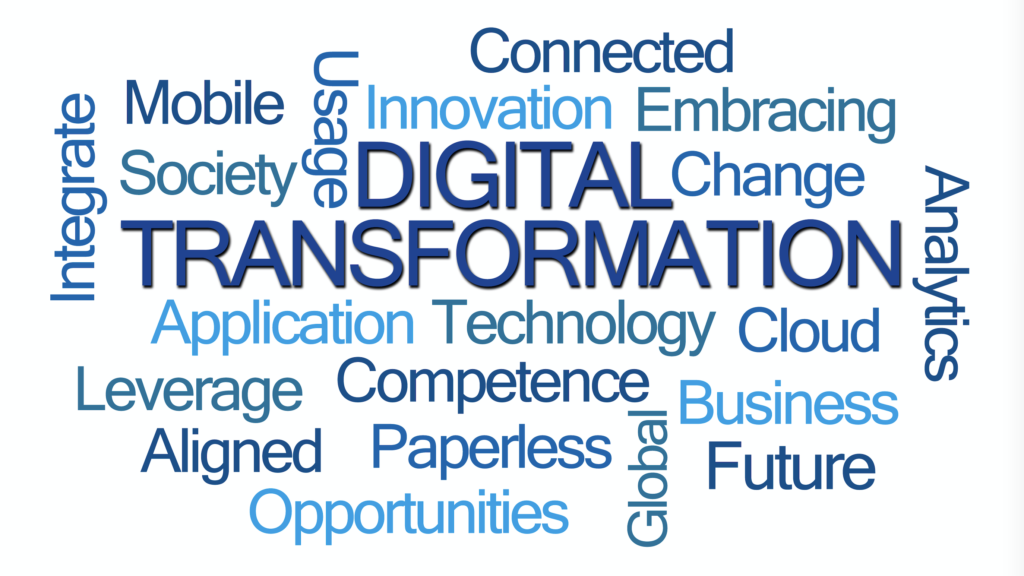 As the world’s economy suffers from the impact of COVID-19 – not just from the highly contagious disease itself but also from the prescriptions for its prevention and eradication – I expect that one fallout of this crisis will be the acceleration of digital transformation of enterprises, and of life in general. In fact, it’s already accelerating in some quarters of our economy.
As the world’s economy suffers from the impact of COVID-19 – not just from the highly contagious disease itself but also from the prescriptions for its prevention and eradication – I expect that one fallout of this crisis will be the acceleration of digital transformation of enterprises, and of life in general. In fact, it’s already accelerating in some quarters of our economy.
Digital transformation has already become a business “mega-trend” – it has been happening over the last several years as companies take advantage of faster and better technologies to streamline processes and reduce the cost of serving customers.
During our current and sudden economic crisis, many businesses have paused investments in new systems to focus on survival and adaptation in the short term. But at the same time some have hastened their efforts to automate and digitize out of necessity, to better reach and support customers and to keep back-office operations functioning during this time of “social distancing.”
As in-person contact, transit and travel have been restricted for many people, working remotely from home and going online to order products and services is the “new normal.” Our telecom and internet infrastructure has generally responded very well to the increase in digital traffic. For businesses that deliver their services primarily over the internet, like SaaS solution vendors and digital entertainment companies, the crisis is providing a bit of an economic boost. But most are grappling with significant operational and financial shocks and learning how technology can help them cope and recover.
Where many challenges – and opportunities – have appeared are where system interfaces and automated processes are not so well developed. For most companies the crisis has exposed the links in their supply, distribution, and service chains, as well as in their information and decision chains, that still require manual effort and are prone to disruption when a catastrophic event occurs.
Today there’s greater incentive than ever to achieve the benefits of digital automation and transformation, and be better prepared to adapt to ongoing change as well as sudden disruption. As the crisis enters the later stages and recovery is under way, I think the pace of digital transformation will pick up quickly.
Some of the most common ways companies leverage and benefit from digital transformation include:
Streamlining operational and management processes
- Business Process Automation (BPA): Consolidating processes and eliminating manual activities
- Robotic Process Automation (RPA): A step above BPA, automating data transfers between systems, reducing routine data handling and validation
- Enabling the workforce to focus more on value-added activities, increasing employee empowerment
- Improved collaboration across departments and among roles
- Greater transparency and better information, making employees more informed and efficient
Business risk reduction
- Enhanced process reliability and reduction in mistakes
- More complete and up-to-date information, enabling evaluation of options and providing greater confidence for decision-making
- Reduced impact from disruptions caused by economic downturns, natural disasters, pandemics, military conflict
- Processes that are more fully automated or can be performed from anywhere, reducing the impact from workforce interruptions
- Better data protection
Better support of customers and increasing customer loyalty
- Improved accessibility and customer experience, resulting in higher customer satisfaction and brand loyalty
- Faster and more accurate discovery and targeting of customer needs
- Innovation of new ways to communicate with the market and deliver products
Strengthening the supply and distribution chains
- Through digital integration, more seamless cooperation and less friction with suppliers and distributors, resulting in more efficient relationships
- Better monitoring of demand and inventories, and improved alignment of demand and supply
Improved decision-making and business agility
- More reliable and actionable data to provide insights to inform decision-making
- Faster identification and validation of new opportunities; being better able to capitalize on change
- Increased flexibility and scalability of the business model
- Ability to keep up with market changes and the competition, and find ways to beat the competition
When it comes to being successful with digital transformation, here are a couple of important points to understand:
- Digital transformation is not mainly about adopting technology, it’s more about the operational, organizational and even cultural changes that need to be made. It requires being in touch with the needs of customers and how they like to be served, as well as understanding how employees and business partners can most efficiently deliver the products and services that customers want. The goals are driven by these factors, which inform how business processes should be changed and made more flexible. Then, technology is applied to enable the transformation.
- Digital transformation is most effective in the long term as a strategy, not as a quick reaction to a crisis. It requires thinking through how the organization and its processes can best support the company’s goals, customers, employees and other stakeholders. And the result shouldn’t lock you into one way of doing things, just today’s “best way.” Digital transformation is a process and technology framework for business agility that will support your organization as conditions and opportunities evolve into the future.
What transformations could move your organization ahead and better prepare you for the future, even in the current difficult and uncertain environment?
